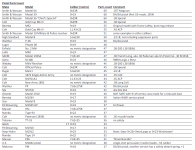Independent George
New member
I haven't shot anywhere near as much as most of the regulars here, but I would guess that the OP's experiences seems to be rather unusual.
I've personally shot about 4,500 rounds through mostly two guns (CZ SP-01, CZ PCR), with no failures since the break-in period (a couple double-feeds early on with the SP-01, not included in that round count). I've taken classes consisting of over a dozen people shooting 400 rounds each, without a single failure between them.
Before I bought my gun, I shot a bunch of different rental guns, putting 100-200 rounds through nine different models, and didn't experience a single failure.
I've personally shot about 4,500 rounds through mostly two guns (CZ SP-01, CZ PCR), with no failures since the break-in period (a couple double-feeds early on with the SP-01, not included in that round count). I've taken classes consisting of over a dozen people shooting 400 rounds each, without a single failure between them.
Before I bought my gun, I shot a bunch of different rental guns, putting 100-200 rounds through nine different models, and didn't experience a single failure.

